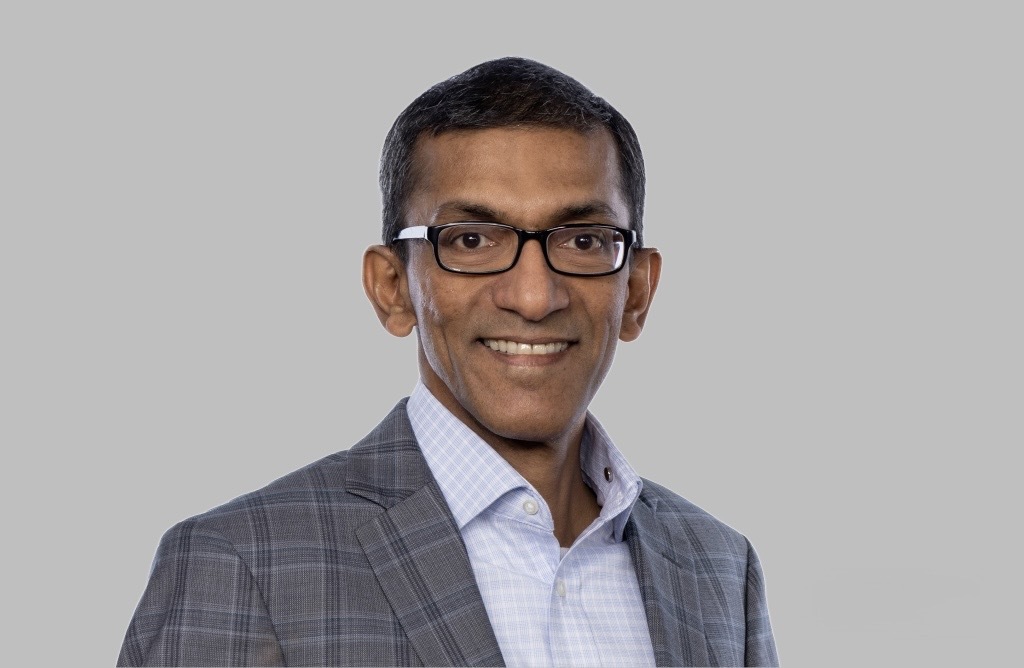Dell’s CTO and chief AI officer has one foot in the present and one in the future

As CTO at Dell, John Roese has spent much of his time with an eye on the future, looking at how Dell can expand its markets. But about a year ago, he stepped into a second job as chief AI officer, a role that’s firmly rooted in the present. Now, he has to balance the two, but it’s very much a challenge he enjoys.
“I run research and overall technology strategy and a whole bunch of other things that make sure that we are able to predict the future and navigate it,” he said. But when he took on the second title last year, he quickly learned that AI is something that can’t wait. “[Implementing AI] has less to do with predicting the future, even though you have to do some of that, and more about operationalizing it,” he told FastForward.
What made the AI role interesting was that it’s a relatively new job, and there was no real playbook for him to follow. He had to figure out how to operationalize AI inside the company, taking on a title that he points out didn’t even exist five years ago.
“There were no generative AI experiences. Nobody did this. And so, you know, in that capacity, to me, it's been intellectually extremely interesting because not only did we have to go do it, we had to invent the way to do it,” Roese said.
That in turn has led to quickly learning how to incorporate agents into the mix, and transforming his research team into agent builders. That's not an easy task, especially while managing two jobs inside an almost $90 billion company.
Starting on the AI-first journey
We hear a lot about companies becoming AI-first, meaning that they try to incorporate AI into every aspect of their company’s operations. Roese has been on that journey for the last year, learning as he goes. “As the chief AI officer, my job is to activate this company to be customer zero when it comes to adoption of AI. We started the journey not as a company powered by AI. And now, I would argue that the vast majority of our company is absolutely powered by AI, and having significant material impact on our business,” he said.
He says it’s not just happenstance that gets you there. The chief AI officer needs to be aware of what’s happening in the industry. “You cannot be a chief AI officer without a deep understanding of the actual AI ecosystem and technology as it's forming. You cannot do this from the outside. The technology evolution and the speed at which it's happening are central to your AI strategy. If you don't know what AI is, trying to figure out how to do a strategy to use it is impossible,” he said.
He admits that it has not always been a smooth journey. “We made all the mistakes you can imagine, and then finally figured out a method that allowed us to actually get into production and start having an impact.”
Moving from research to building
A key step in his company’s AI strategy was making a shift from research to building. One of the first steps he took was to move engineering talent that had been working on AI research and put that team to work building AI applications.
“I was fortunate that I have an applied research team that actually knew how to build stuff, and I pivoted them wholesale, the entire organization moved under the chief AI officer function. Then I rebuilt the research organization,” he said. In fact, he basically had no research organization for a period of time because he took the whole team and refocused them.

“I knew how hard this was going to be, that the need to understand deeply was critical, and the only way to do that was having people with hands on keyboards working with these technologies,” he said.
Roese didn’t waste any time when it came to agentic AI, which is defined as a bot that can undertake a series of tasks on its own with or without human intervention. Naturally, since the team's previous focus had been research, they started with a research agent. It had two technology components: a technical agent and an editorial agent. The former’s job was to find the latest scientific research, while the latter’s job was to compile that information into a report. There was also a human involved to refine prompts and deal with bottlenecks and other problems as they occurred.
Putting an AI agent to work
The company was looking at privacy issues around AI PCs at the time, so the initial project for the agent was to research this problem. The team built an agent that could handle the heavy lifting: gather relevant research, organize and validate it, debate accuracy, then turn it into a polished report. Humans stepped in only for review and configuration, cutting the work by 70%.
Today they have close to 30 AI projects implemented at scale, whittled down from as many as 700 to 900 initial ideas and experiments. Roese says they have a highly exacting process for determining ROI in order to prioritize high impact projects
“We threw most of them away, and we went after those big ones that have generated the greatest ROI, and which are materially impacting our business. Part of that was because we realized that there's an infinite amount of AI tooling and technology out there, and if you try to just figure out what to do with all of it, you'll never get there,” he said.
“I knew how hard this was going to be, that the need to understand deeply was critical, and the only way to do that was having people with hands on keyboards working with these technologies,” he said.
“So we flipped the whole model, and now we basically are very rigorous about only pursuing AI projects where we can clearly see is part of the transformation of our business, and that the application of AI to that process will produce significant material impact for the company.”
In many ways that relates to the way the company deals with startups. They have a similarly rigid process to narrow down the ones that are going to help them. Yet for a long time they avoided startups altogether because they believed that they didn’t understand the enterprise. That changed fairly recently. “About a year ago, we said, ‘that's ridiculous. It's our job to help them understand enterprise.’”
He uses Glean, the AI search tool, as an example. He says they talked to the company about changing the architecture to accommodate an enterprise the size of Dell, something the startup was very open to doing. “They said, ‘that's great. If we can solve for Dell, we can solve anybody,’” he said. Instead of being fully cloud-based, the companies announced in May that Glean was building a hybrid approach that enabled enterprises that were so inclined to run Glean on prem.
Every company needs to move into AI, and Dell put an industry veteran like Roese in charge of their AI effort to help move it forward quickly. By taking his research team and putting it to work, while working with startups and other partners, the company has been able to get up to speed quickly, while it continues to work at incorporating AI applications wherever it makes sense.
Featured photo courtesy of Dell.





